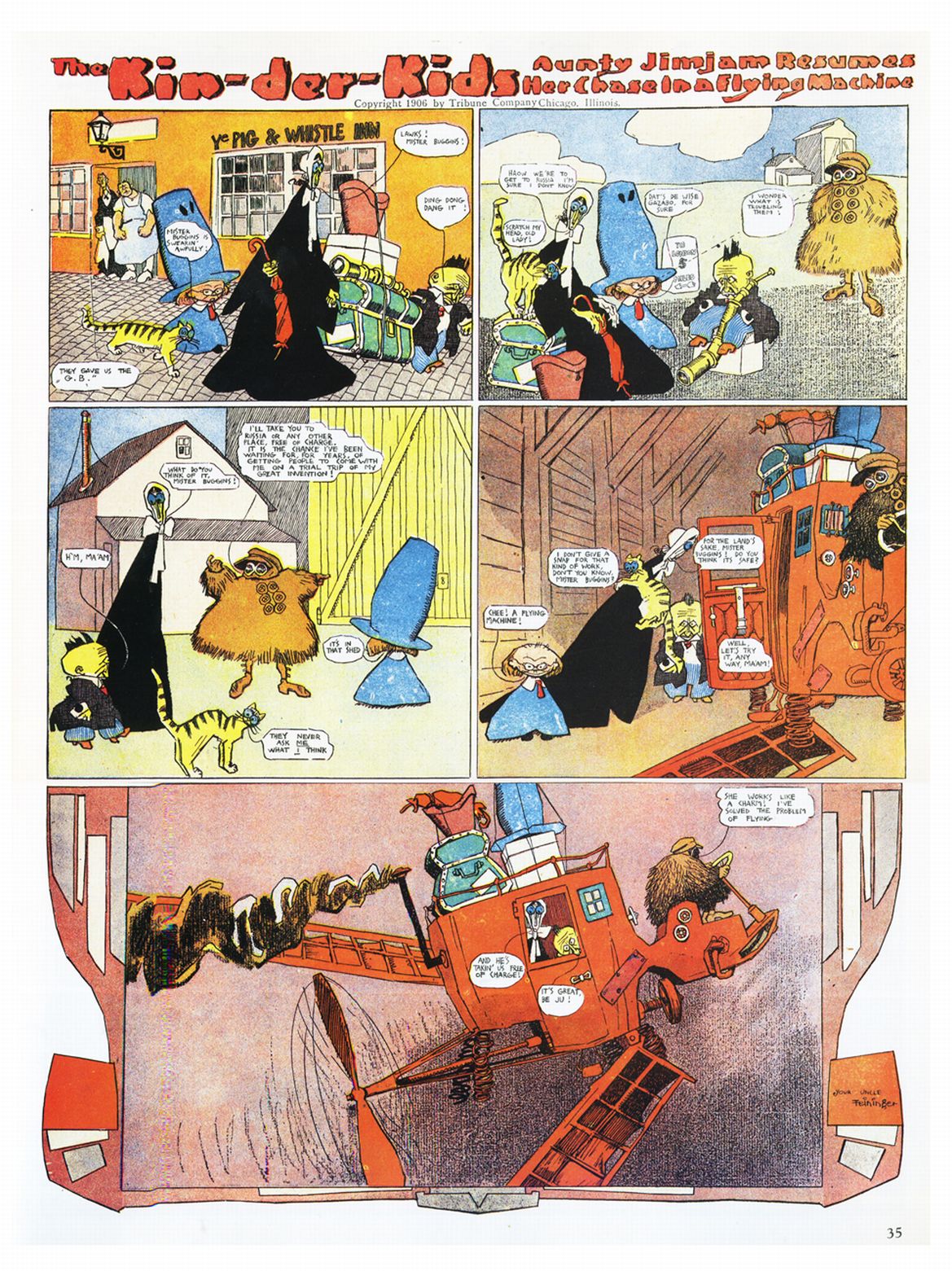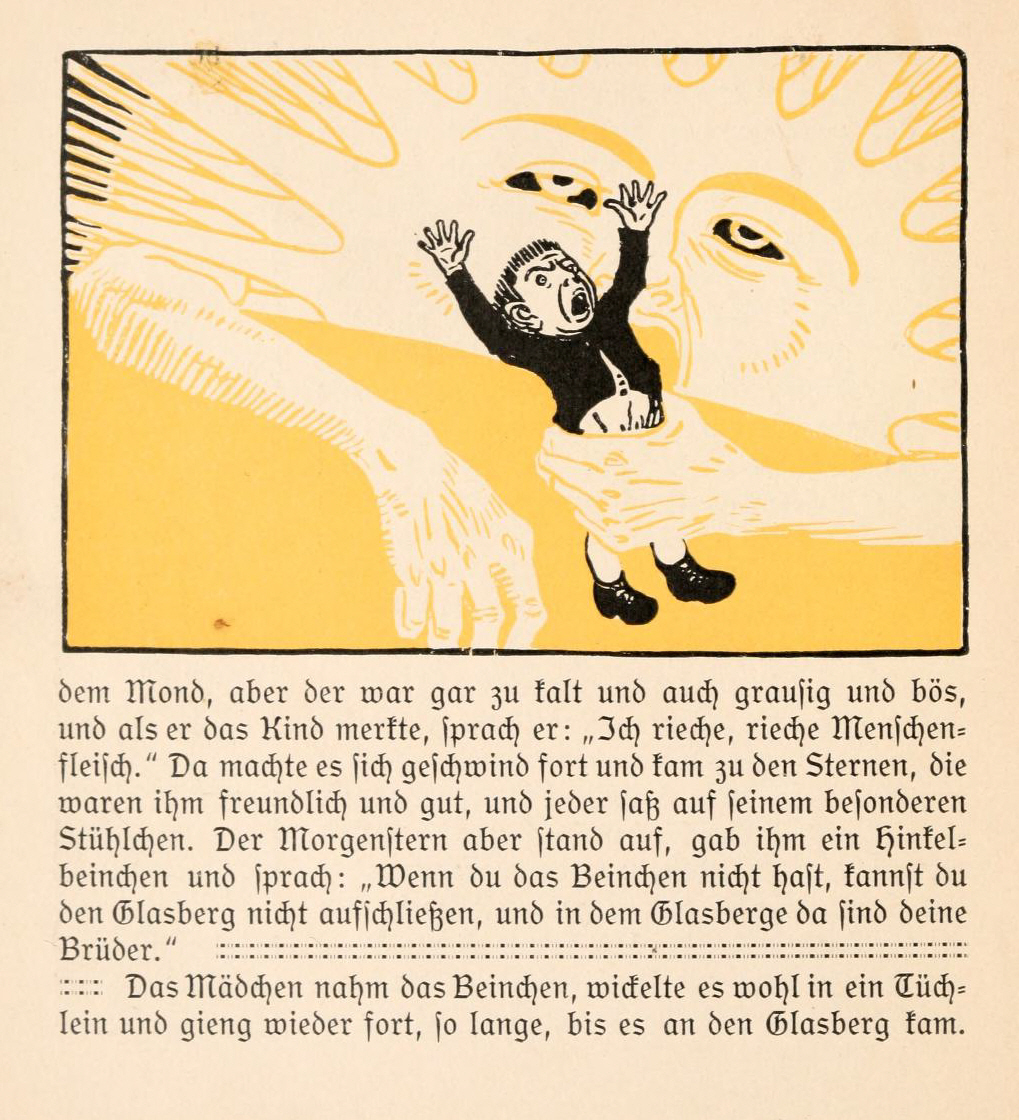We show the illustrations of two books. First,
The Bells and other Poems by Edgar Allan Poe with Illustrations by Edmund Dulac, and second,
The Poetical Works of Edgar Allan Poe with Illustrations by Edmund Dulac.The Bells contains vignettes for the poems and 6 colour plates. Since the same colour plates are found in
The Poetical Works we only show the vignettes of
The Bells.
The Bells1849
How it swells!
How it dwells
On the future! how it tells
Of the rapture that impels
To the swinging and the ringing
Of the bells, bells, bells,
Of the bells, bells, bells, bells,
Bells, bells, bells—
Hear the loud alarum bells—
Brazen bells!
What a tale of terror now their turbulency tells!
In the startled ear of night
How they scream out their affright!
Too much horrified to speak,
They can only shriek, shriek,
Out of tune,
In a clamorous appealing to the mercy of the fire,
In a mad expostulation with the deaf and frantic fire
Leaping higher, higher, higher,
With a desperate desire,
And a resolute endeavor
Now—now to sit or never,
By the side of the pale-faced moon.
Oh, the bells, bells, bells!
What a tale their terror tells
Of Despair!
Annabel Lee
It was many and many a year ago,
In a kingdom by the sea,
That a maiden there lived whom you may know
By the name of Annabel Lee;
And this maiden she lived with no other thought
Than to love and be loved by me.
Silence
There is a twofold Silence—sea and shore—
Body and soul. One dwells in lonely places,
Newly with grass o'ergrown; some solemn graces,
Some human memories and tearful lore,
Render him terrorless: his name's "No More."
He is the corporate Silence: dread him not!
No power hath he of evil in himself;
But should some urgent fate (untimely lot!)
Bring thee to meet his shadow (nameless elf,
That haunteth the lone regions where hath trod
No foot of man), commend thyself to God!
The Raven
Once upon a midnight dreary, while I pondered, weak and weary,
Over many a quaint and curious volume of forgotten lore—
While I nodded, nearly napping, suddenly there came a tapping,
As of some one gently rapping—rapping at my chamber door.
"'Tis some visitor," I muttered, "tapping at my chamber door—
Only this and nothing more."
To One in Paradise
Thou wast that all to me, love,
For which my soul did pine—
A green isle in the sea, love,
A fountain and a shrine,
All wreathed with fairy fruits and flowers,
And all the flowers were mine.
Ah, dream too bright to last!
Lenore
Ah, broken is the golden bowl! the spirit flown forever!
Let the bell toll!—a saintly soul floats on the Stygian river.
And, Guy de Vere, hast thou no tear?—weep now or never more!
See! on yon drear and rigid bier low lies thy love, Lenore!
Come! let the burial rite be read—the funeral song be sung!—
An anthem for the queenliest dead that ever died so young—
A dirge for her, the doubly dead in that she died so young.
To Helene
I saw thee once—once only—years ago:
I must not say how many—but not many.
It was a July midnight; and from out
A full-orbed moon, that, like thine own soul, soaring,
Sought a precipitate pathway up through heaven,
There fell a silvery-silken veil of light,
With quietude, and sultriness and slumber,
Upon the upturn'd faces of a thousand
Roses that grew in an enchanted garden,
Where no wind dared to stir, unless on tiptoe—
Fell on the upturn'd faces of these roses
That gave out, in return for the love-light,
Their odorous souls in an ecstatic death—
The Haunted Palace
But evil things, in robes of sorrow,
Assailed the monarch's high estate.
(Ah, let us mourn!—for never morrow
Shall dawn upon him desolate !)
And round about his home the glory
That blushed and bloomed,
Is but a dim-remembered story
Of the old time entombed.
The City in the Sea
No rays from the holy Heaven come down
On the long night-time of that town;
But light from out the lurid sea
Streams up the turrets silently—
Gleams up the pinnacles far and free—
Up domes—up spires—up kingly halls—
Up fanes—up Babylon-like walls—
Up shadowy long-forgotten bowers
Of sculptured ivy and stone flowers—
Up many and many a marvellous shrine
Whose wreathed friezes intertwine
The viol, the violet, and the vine.
The Sleeper
All Beauty sleeps!—and lo! where lies
(Her casement open to the skies)
Irene, with her Destinies!
Oh, lady bright! can it be right—
This window open to the night!
Ulalume
Thus I pacified Psyche and kissed her,
And tempted her out of her gloom—
And conquered her scruples and gloom;
And we passed to the end of a vista,
But were stopped by the door of a tomb—
By the door of a legended tomb;
And I said—"What is written, sweet sister,
On the door of this legended tomb?"
She replied—"Ulalume—Ulalume—
'Tis the vault of thy lost Ulalume!"
Eldorado
And, as his strength
Failed him at length,
He met a pilgrim shadow—
"Shadow," said he,
"Where can it be—
This land of Eldorado?"
The Conqueror Worm
Out—out are the lights—out all!
And, over each quivering form,
The curtain, a funeral pall,
Comes down with the rush of a storm,
And the angels, all pallid and wan,
Uprising, unveiling, affirm
That the play is the tragedy, "Man,"
And its hero the Conqueror Worm.
To the River
But when within thy wave she looks—
Which glistens then, and trembles—
Why, then, the prettiest of brooks
Her worshipper resembles;
For in his heart, as in thy stream,
Her image deeply lies—
His heart which trembles at the beam
Of her soul-searching eyes.
Al Aaraf (1)
In Heaven, and all its environs, the leaf
And blossom of the fairy plant, in grief
Disconsolate linger—grief that hangs her head,
Repenting follies that full long have fled,
Heaving her white breast to the balmy air,
Like guilty beauty, chasten'd, and more fair:
Nyctanthes too, as sacred as the light
She fears to perfume, perfuming the night...
Al Aaraf (2)
Upon a mountain crag, young Angelo—
Beetling it bends athwart the solemn sky,
And scowls on starry worlds that down beneath it lie.
Here sate he with his love—his dark eye bent
With eagle gaze along the firmament:
Now turn'd it upon her—but ever then
It trembled to the orb of Earth again.
Bridal Ballad
The ring is on my hand,
And the wreath is on my brow;
Satins and jewels grand
Are all at my command.
And I am happy now.
The Valley of Unrest
Now each visitor shall confess
The sad valley's restlessness.
Nothing there is motionless—
Nothing save the airs that brood
Over the magic solitude.
To -
Thine eyes, in Heaven of heart enshrined
Then desolately fall,
O God! on my funereal mind
Like starlight on a pall—
Israfel
In Heaven a spirit doth dwell
"Whose heart-strings are a lute;"
None sing so wildly well
As the angel Israfel,
And the giddy Stars (so legends tell),
Ceasing their hymns, attend the spell
Of his voice, all mute.
Fairyland
Dim vales—and shadowy floods—
And cloudy-looking woods,
Whose forms we can't discover
For the tears that drip all over
Huge moons there wax and wane—
Again—again—again—
Every moment of the night—
Forever changing places—
And they put out the star-light
With the breath from their pale faces.
Dreamland
Bottomless vales and boundless floods,
And chasms, and caves, and Titan woods,
With forms that no man can discover
For the dews that drip all over;
Mountains toppling evermore
Into seas without a shore;
Seas that restlessly aspire,
Surging, unto skies of fire;
Lakes that endlessly outspread
Their lone waters—lone and dead,
Their still waters—still and chilly
With the snows of the lolling lily.
Alone
From childhood's hour I have not been
As others were—I have not seen
As others saw—I could not bring
My passions from a common spring—
From the same source I have not taken
My sorrow—I could not awaken
My heart to joy at the same tone—
And all I loved—I loved alone—
Tamerlane
We grew in age—and love—together—
Roaming the forest, and the wild;
My breast her shield in wintry weather—
And, when the friendly sunshine smiled.
And she would mark the opening skies,
I saw no Heaven—but in her eyes.























































































































































 .
.










































































































































